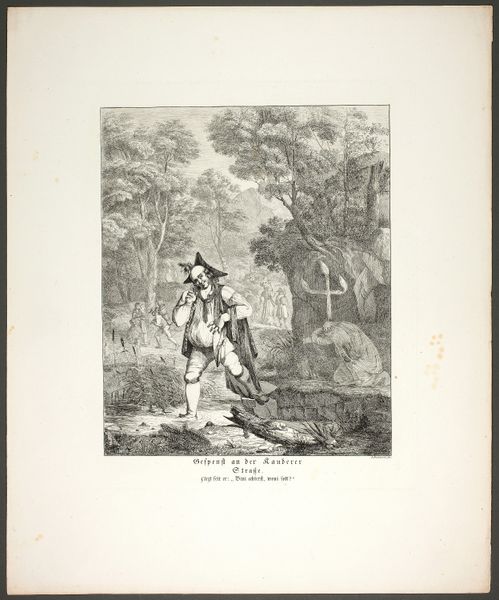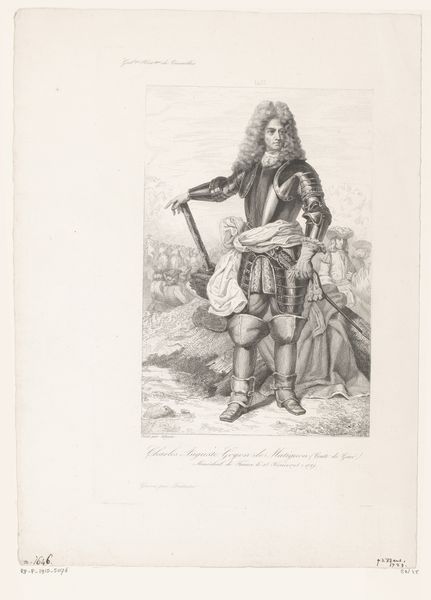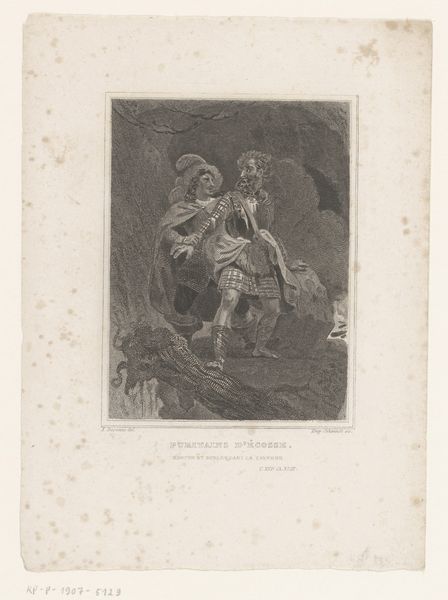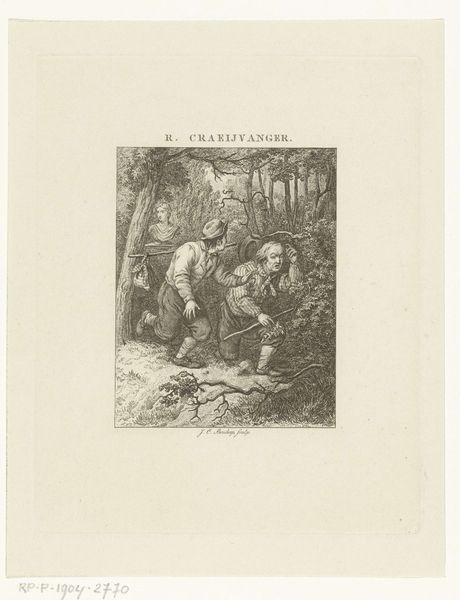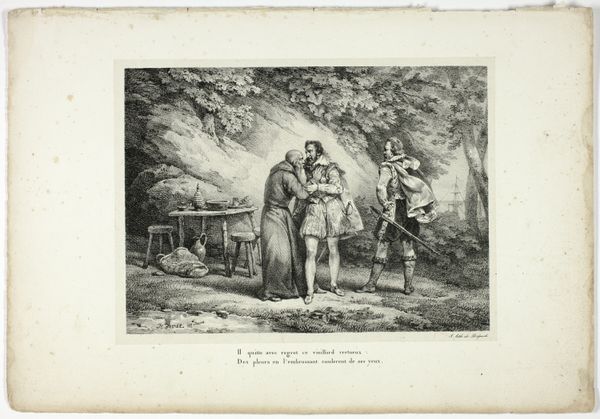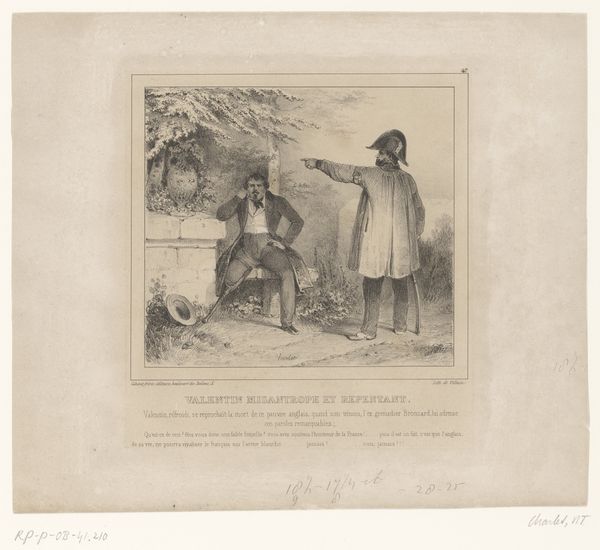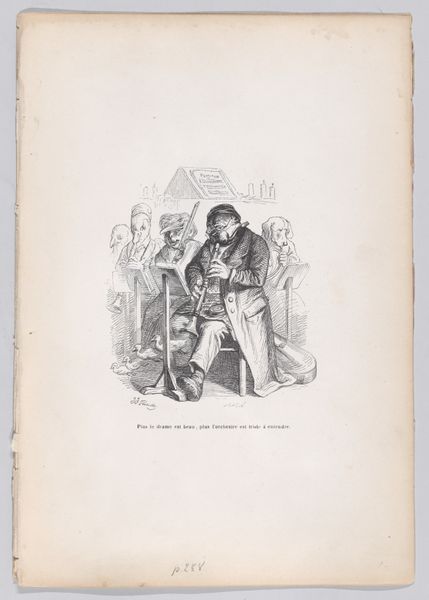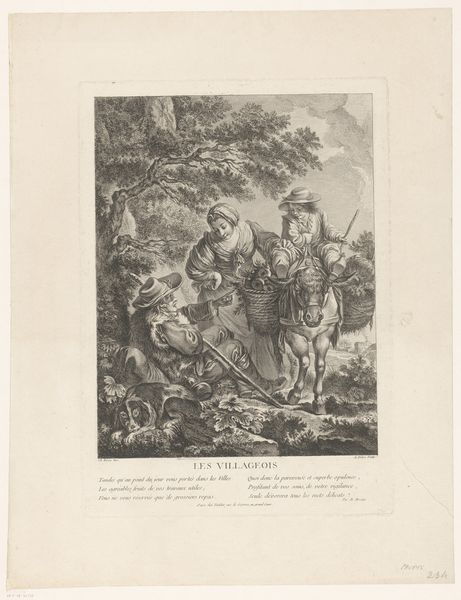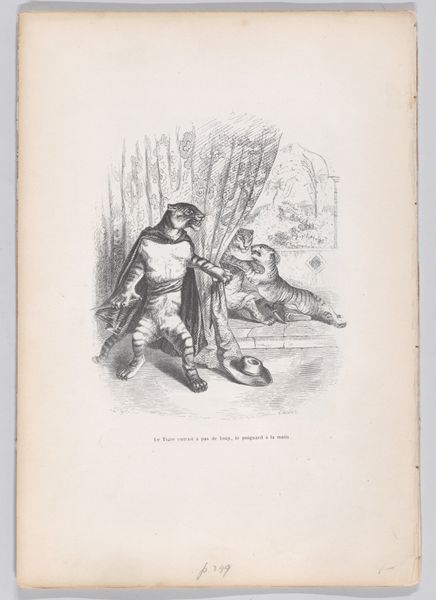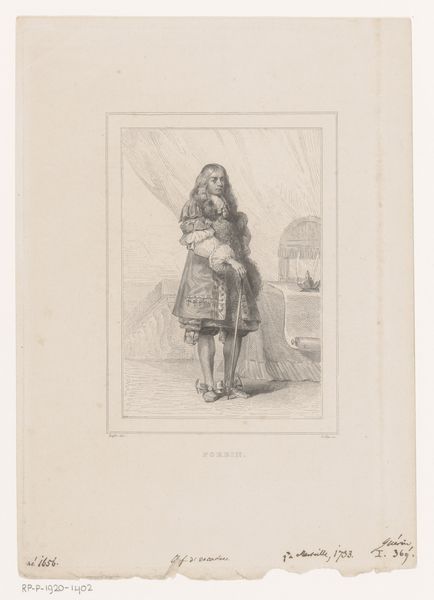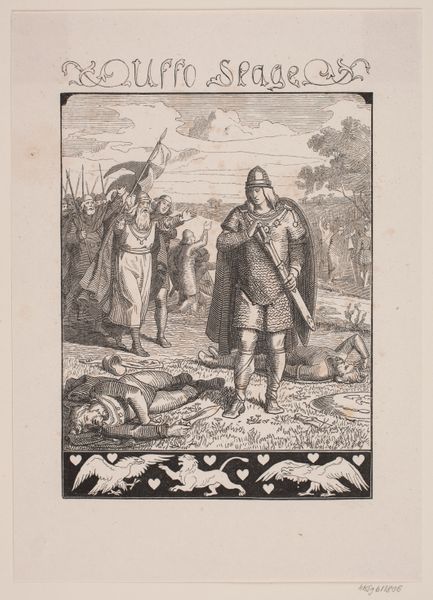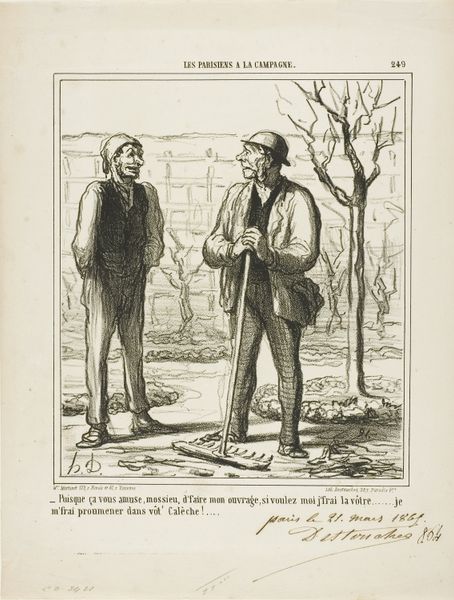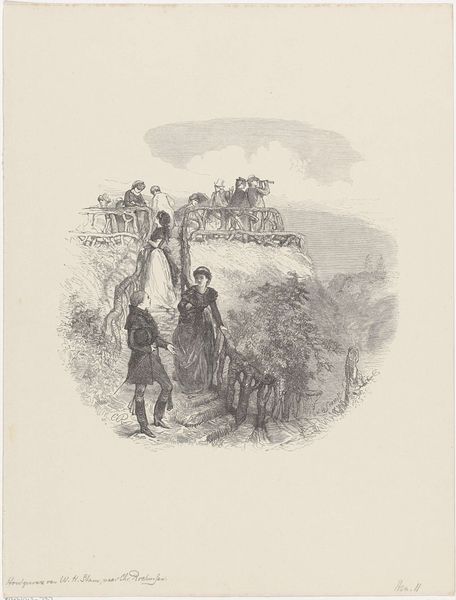
drawing, lithograph, print, paper
#
portrait
#
drawing
#
lithograph
# print
#
paper
#
pencil drawing
#
history-painting
Dimensions: 249 × 180 mm (image); 541 × 353 mm (sheet)
Copyright: Public Domain
Curator: This is Eugène Delacroix's "Vercingétorix," created in 1829. It's a lithograph, a print made on paper, capturing the leader of the Gauls. Editor: Oh, instantly, there's a brooding quality to him, a weightiness that almost transcends the simple black and white of the lithograph. Look at the defeated sword, the helmet on the ground. What material realities are hinted at, beneath this image of martial failure? Curator: Absolutely. Delacroix imbues the figure with a tragic grandeur. Consider the social context; in 1829 France was rediscovering its past, its pre-Roman history. It’s no accident that this print makes Vercingetorix more thoughtful hero than barbarian chief. What can you tell me about the lithographic process itself? Editor: Well, this process made multiples affordable. While an original drawing bears the weight of an artist's unique touch, this lithograph offered something else, a chance to share history more widely. We often divorce 'high art' prints from their role in democratizing narratives of the past, and this would’ve reached many, fostering nationalist sentiment. It shows how print served both artistic and socio-political agendas. Curator: That makes perfect sense. He's carrying a shield. I can imagine it catching the sun's light, not just defending, but radiating power and... perhaps the future hope of resistance. What do you see in that stark black-and-white? Editor: This stark contrast of light and shadow serves as both simplification and a powerful focusing device. Paper as support often feels passive, but here, its whiteness becomes almost as critical as the lithographic ink. It shapes the experience as one of fleeting, captured memory. Curator: There’s a vulnerability, too, beneath the bravado, even in this smaller format, which measures around 10 by 8 inches. A real tension between the personal and public, wouldn't you agree? Editor: A fitting epitaph for Vercingetorix, the print and the person, captured so many years later by a process rooted in materials and labor. I'm still intrigued how this was originally published, in a little-known French academic book... Curator: Which speaks volumes about who he wanted this Gallic chieftain to reach... Now, standing before it again, the sense of romantic tragedy becomes ever more apparent... It's haunting.
Comments
No comments
Be the first to comment and join the conversation on the ultimate creative platform.

